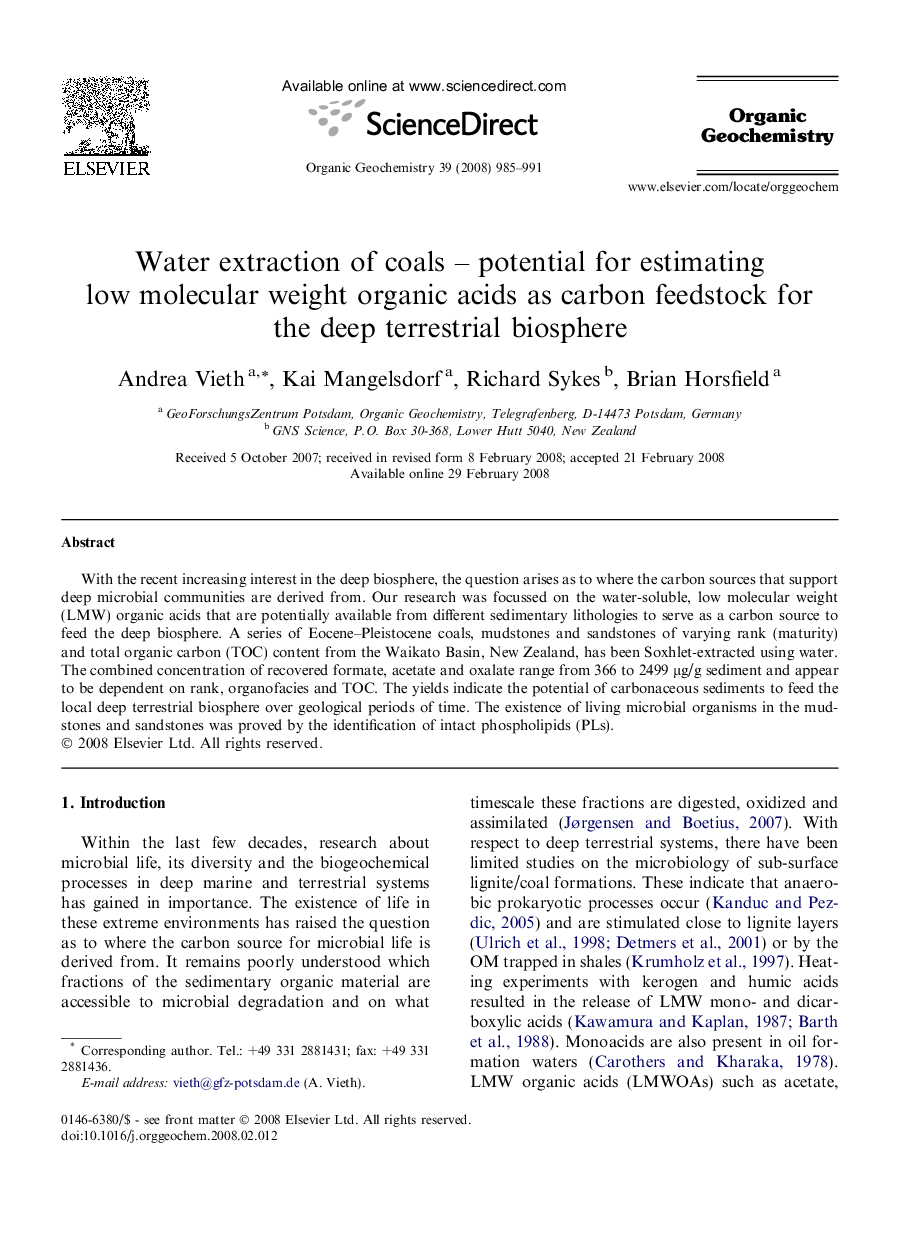| Article ID | Journal | Published Year | Pages | File Type |
|---|---|---|---|---|
| 5161988 | Organic Geochemistry | 2008 | 7 Pages |
Abstract
With the recent increasing interest in the deep biosphere, the question arises as to where the carbon sources that support deep microbial communities are derived from. Our research was focussed on the water-soluble, low molecular weight (LMW) organic acids that are potentially available from different sedimentary lithologies to serve as a carbon source to feed the deep biosphere. A series of Eocene-Pleistocene coals, mudstones and sandstones of varying rank (maturity) and total organic carbon (TOC) content from the Waikato Basin, New Zealand, has been Soxhlet-extracted using water. The combined concentration of recovered formate, acetate and oxalate range from 366 to 2499 μg/g sediment and appear to be dependent on rank, organofacies and TOC. The yields indicate the potential of carbonaceous sediments to feed the local deep terrestrial biosphere over geological periods of time. The existence of living microbial organisms in the mudstones and sandstones was proved by the identification of intact phospholipids (PLs).
Related Topics
Physical Sciences and Engineering
Chemistry
Organic Chemistry
Authors
Andrea Vieth, Kai Mangelsdorf, Richard Sykes, Brian Horsfield,
